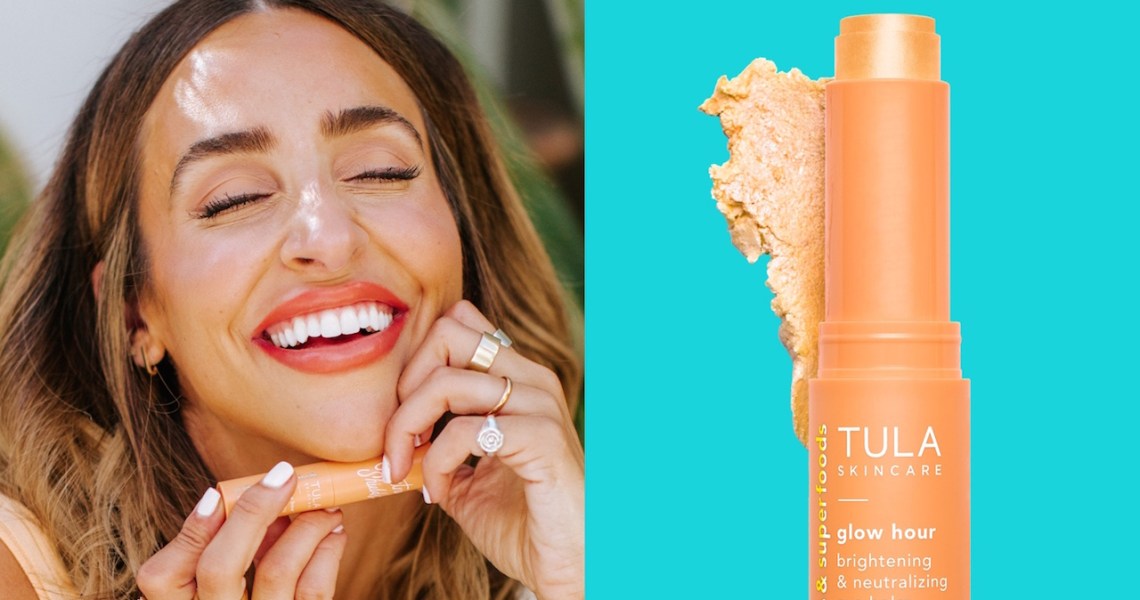Influencer collaborations are a tried-and-true formula for boosting makeup sales and brand awareness, but beauty brands are now increasingly turning to influencers for collaboration outside of makeup.
Over the past 12 months, influencer collaborations have emerged across skin care and hair care. In Oct. 2019, Kourtney Kardashian and her content website Poosh had a collaboration with aromatherapy brand Saje Natural Wellness. This was closely followed by Briogeo’s first-ever collaboration, with YouTuber Kathleen Lights. More recently, Tula skin care worked with macro-influencer Courtney Shields and Olympic gymnast Shawn Johnson, while hair accessories brand Insert Name Here launched a wig collab with Liane V, who has 4.5 million Instagram followers. Even Elemis skin care had a curated product kit with Lauryn Evarts Bosstick of the podcast and blog The Skinny Confidential.
“The cosmetics space is supersaturated, and a lot of influencers are now launching their own makeup brands,” said Jordynn Wynn, Insert Name Here co-founder. “Beauty brands that do collaborations have done so many at this point, so influencers are looking to step into other categories of interest to them and create something that is more personal and custom.”
It is not an understatement to say that influencer collaborations have changed the face and landscape of the beauty industry. Collaborations have over the last three years innovated the cosmetics category by bringing in an outside perspective and promoting brand awareness in a way that feels unforced. But innovation in the makeup category is stagnating, and skin care has gained more influencer attention since February according to WWD, citing Tribe Dynamics data. The development of skin-care and hair-care collaborations presents an opportunity for influencers to flex their ability to drive brand equity, if they prove effective.
“Collaborations are another proof point that skin care is the new color, in terms of growth and innovation,” said Savannah Sachs, Tula CEO. Tula sales have grown by 300% year-over-year for the last three years in a row, with DTC e-commerce comprising over 50% of its sales, said Sachs. Influencers are a key part of the brand’s sales strategy, as 50% of Tula’s revenue is through influencer affiliate marketing.
Tula has seen significant success so far with both of its collaborations. The eye balm collaboration with Shields in July resulted in the single biggest sales day in Tula.com history on the day it launched. The eye balm was purchased every three seconds. Then, the pumpkin scrub collaboration with Shawn Johnson in August sold out within the first two weeks in the 400 Ulta doors where it was carried. It has also been in Tula.com’s top-five best-sellers since its launch. Sachs said that Tula views these collaborations as strategic business initiatives and that Johnson opted to receive equity in the company in lieu of a traditional cash payment.
Skin-care and hair-care collaborations are particularly unique, compared to makeup, given that different hair types and skin types narrow a product’s appeal. There are also limitations, in terms of spotlighting the influencer on the product, since the packaging is often smaller or oddly shaped, compared to an item like a large eye shadow palette. Wynn and her co-founder Sharon Pak — who both previously worked at collaboration-focused Colourpop — found that to be the case with Liane V.
Ad position: web_incontent_pos1
“One of the main differences is that [the Liane V wig] did not have as much surface area to work with, from a marketing or artwork perspective,” said Wynn. “You really have to lean into the actual digital marketing of the collaboration to communicate the messaging and branding of the collab, because the actual product is hair.”
Pak said another takeaway from the collaboration is that it has helped assure new customers that INH is, in fact, a legitimate brand rather than one of the companies hawking sub-par or counterfeit products that can be frequently be found on Instagram.
“Doing collaborations early on in the business is crucial for building credibility,” she said.




